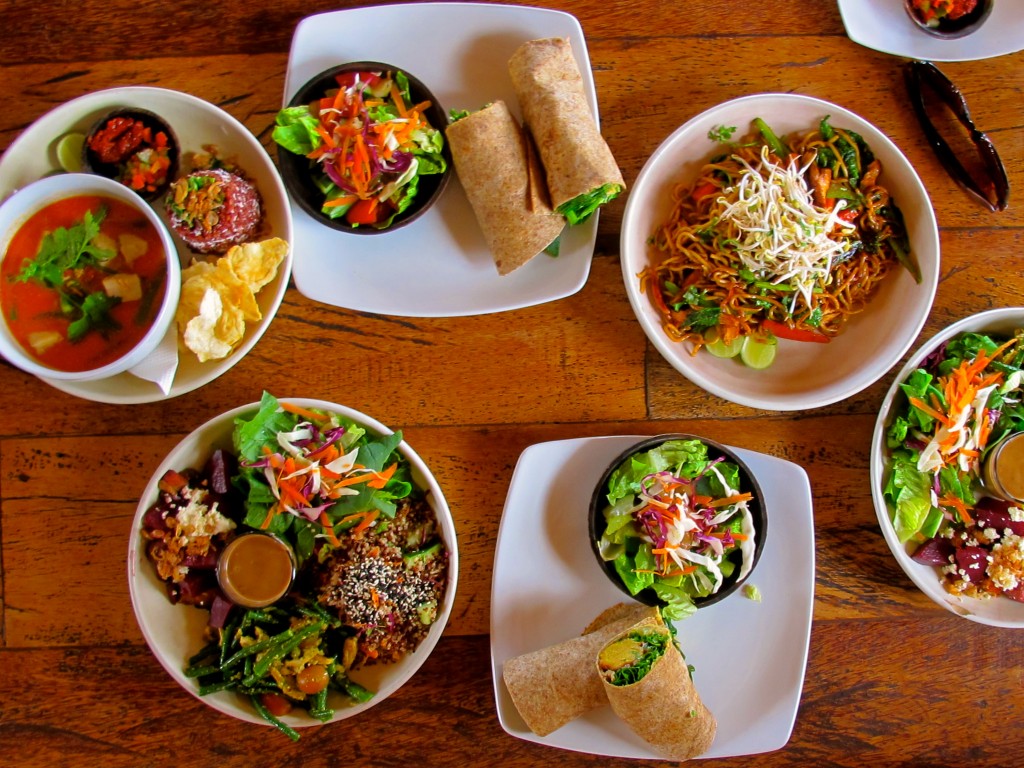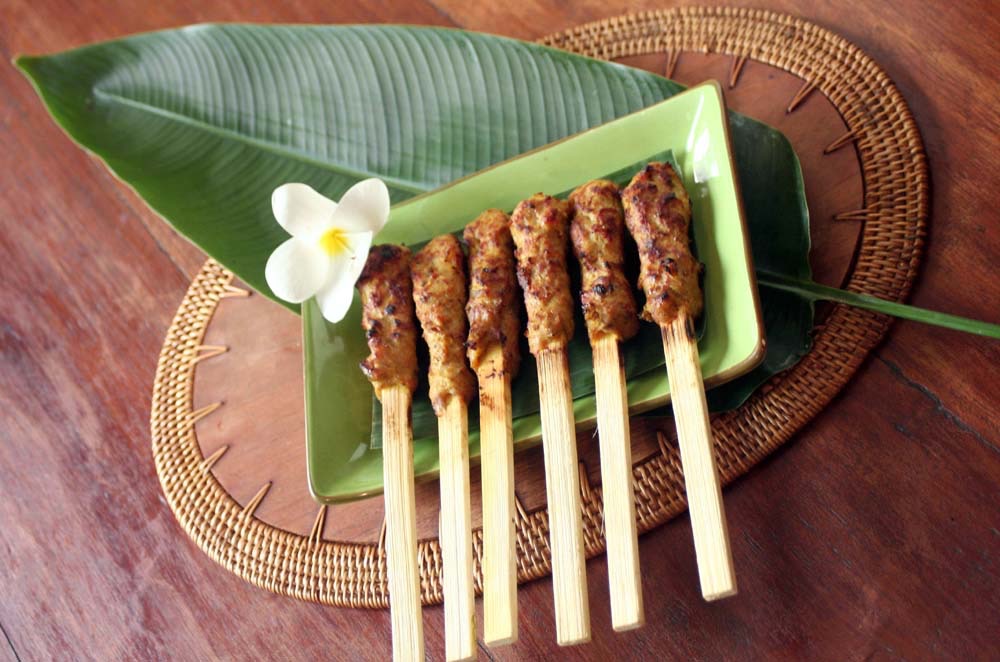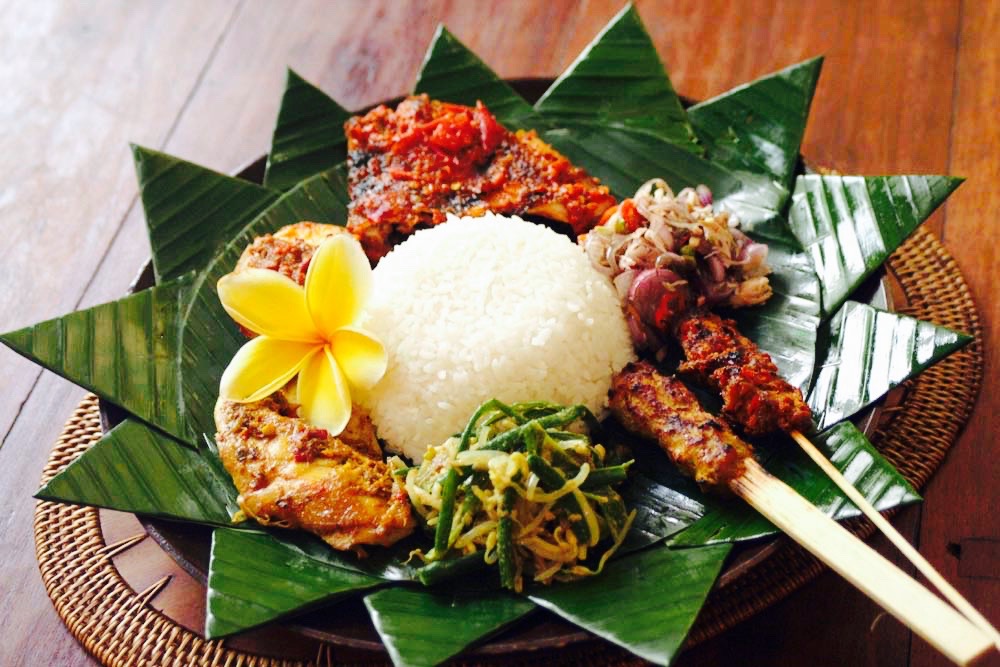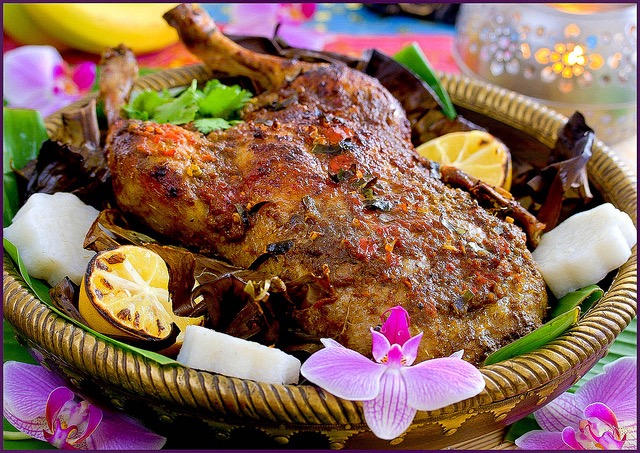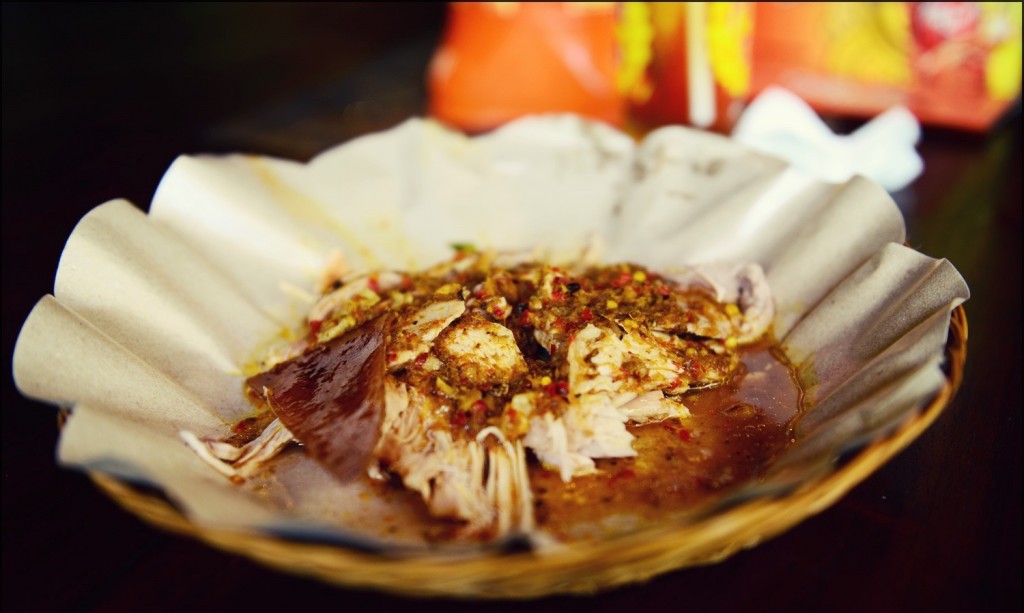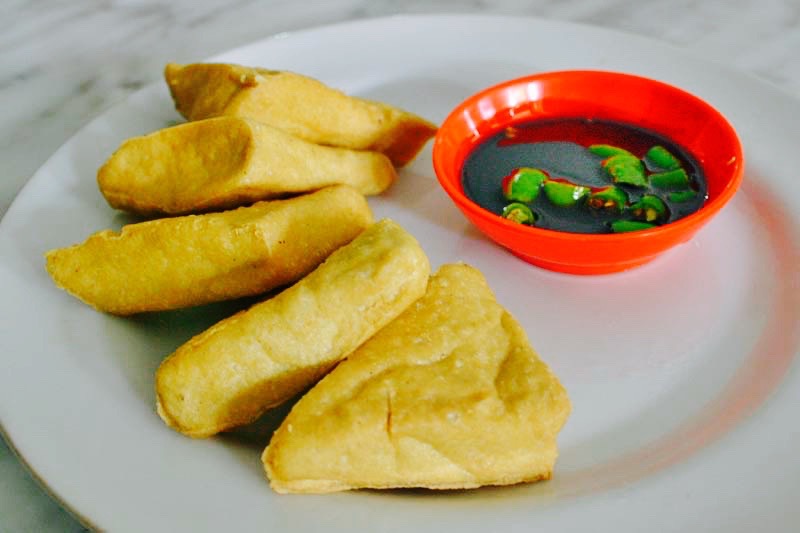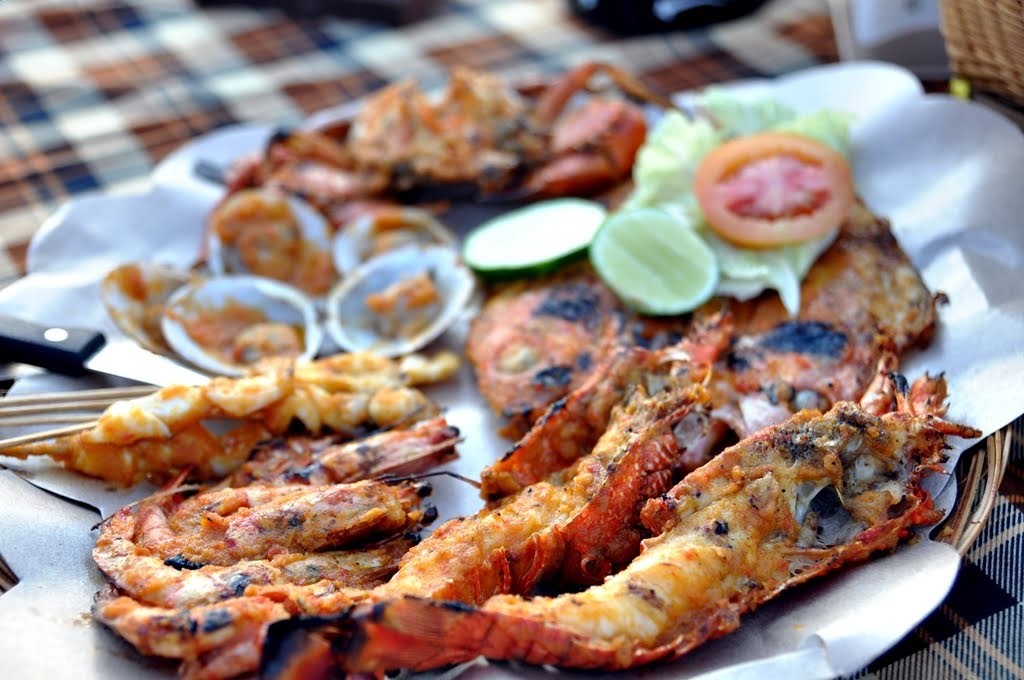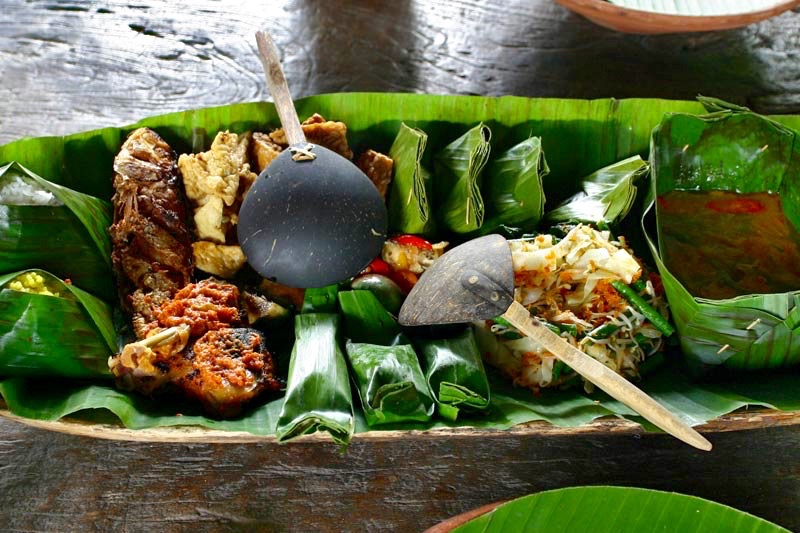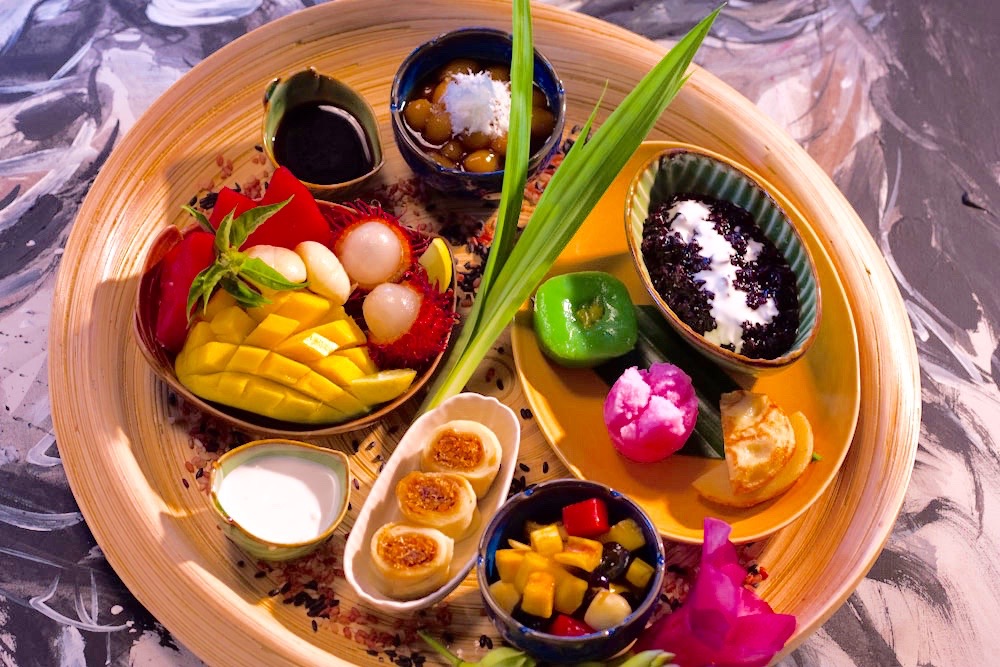Traditional Food
Bali’s food and cuisine is always a highlight to any trip to this beautiful island holiday destination,
whether you choose to indulge in some of the more traditional cuisine or stick to the more familiar
standards of the hotel restaurants. The many open air bamboo cafes found along Bali’s streets are
the perfect spot to soak up the atmosphere while you enjoy a meal however if you feel more comfortable
dining at one of the hotel and resort restaurants, there are plenty to choose from to suit all tastes and budgets.
However, it’s worth trying traditional Bali cuisine for an authentic experience while you’re visiting. Despite
what images the exotic sounding Bali food may conjure, true Balinese cuisine is a contrast between everyday
food and festival food. A staple Balinese diet generally consists of rice and vegetables accompanied by small
amounts of meat or fish cooked in a range of condiments. Listed below are some of the Balinese favourites
Sate Varieties
Sate (or “satay”) are marinated, skewered and grilled meats, served with spicy sauce, and may consist
of diced or sliced chicken, goat, mutton, beef, pork, fish, tofu, eggs or minced blends. Bali’s own variant
is sate lilit, made from minced beef, chicken, fish, pork, or even turtle meat, which is then mixed with
coconut, coconut milk, and a rich blend of vegetables and spices. Wrapped rather than skewered around
bamboo, sugar cane or lemongrass sticks then grilled, sate lilit can be enjoyed with or without sauce.
Nasi Campur
Bali’s own take on ‘chicken rice’, nasi ayam and nasi campur can be found served at many warungs (small eateries) and
restaurants throughout the island. The dish is mainly white rice served with many different elements of Balinese delights,
from a bit of babi buling or betutu as the main meats, together with mixed vegetables and a dab of the
iconic spicy hot sambal matah – sometimes served with a bowl of soup. For those who do not want it too spicy,
simply ask for it without the sambal.
Bebek and Ayam Betutu
Betutu is an iconic Balinese favourite, consisting of a whole chicken or duck stuffed with traditional spices,
wrapped in banana leaves, then enveloped tight in banana trunk bark before it’s baked or buried in a coal fire for 6 to 7 hours.
The result is a rich and juicy, succulent feast with all meat easily separated from bones. Betutu is the Balinese slow-cooked
luscious equivalent of babi guling for ‘non-pork eaters’.
Babi Guling
Babi guling is an all-time favourite, consisting of spit-roast pig stuffed with rich traditional spices and vegetable mixes
such as cassava leaves, slowly ‘rolled’ over (hence its name, guling means ‘to roll’) a coal fire. The crisp brown skins are prized,
while the meat is a tender and juicy treat. At first the dish was a communal treat only during special festivities and ceremonies,
but now babi guling can be found widely served at warungs and restaurants specialising in this dish.
Tahu and Tempe
Among the most versatile of food items, tahu (tofu) and tempe come in various preparations, some as savory snacks,
and some as accompaniments and even main course dishes. These soy bean curds may be fried, stuffed and battered.
Many Indonesian dishes, especially those that have the main portions of rice, include tempe crackers, while the most favourite
tahu snack are the stuffed and fried versions which usually include a mixture similar to spring rolls.
Jimbaran Seafood
The line-up of beachside cafés on Muaya beach in Jimbaran Bay typically serves grilled fresh caught seafood,
ranging from shrimp, clams, crabs, calamari, lobsters and a wide assortment of fish. But in terms of taste, the secret lies
in each of the café owner’s recipes of barbecue sauce and condiments – usually in the form of homemade sambal,
which has collectively become known as “sambal seafood – Jimbaran style”. From sweet-sour blends to the typical hot and spicy…
tasting is believing!
Pepes and Tum
Pepes is an Indonesian Sundanese cooking method using banana-leaf as food wrappings. The small package is sewed
with thin bamboo sticks at both ends, and either steam-cooked, boiled or grilled. It is most commonly used to prepare fish as
“pepes ikan” or meat, chicken, tofu or vegetables. Tum takes on a different form, with the wrapping folded and stitched at one
top end, and usually steam-cooked. The banana-leaf wrapping provides a special aromatic appeal to the cooked blend.
Traditional Cakes and Desserts
Traditional cakes are collectively referred to as jajanan pasar (traditional market cakes), originally used to accompany
ceremonial offerings, but now have found their way to the markets as daily coffee time favourites. The varieties abound,
but the ingredients usually include rice flour, glutinous rice, sugar, coconut and tropical fruits. Wajik, pancong,
jaja batun bedil, bubuh injin, godoh, pisang rai, and kelepon are typical varieties.
Nasi Goreng
Nasi Goreng is Indonesia’s fried rice, one of the nation’s most notable dishes. Nasi Goreng is pre-steamed rice stir-fried with a combination of meats and vegetables, ranging from scrambled eggs, diced beef, strips of chicken, shrimp, anchovies, lamb, crab, green peas, onions, shallots and a blend of sweet soy sauce or kecap manis and hot chilli sauce. The presentation usually features the typical toppings: sliced tomatoes and/or cucumber, fried shallots, fish or shrimp krupuk crackers and mixed pickles or acar.




